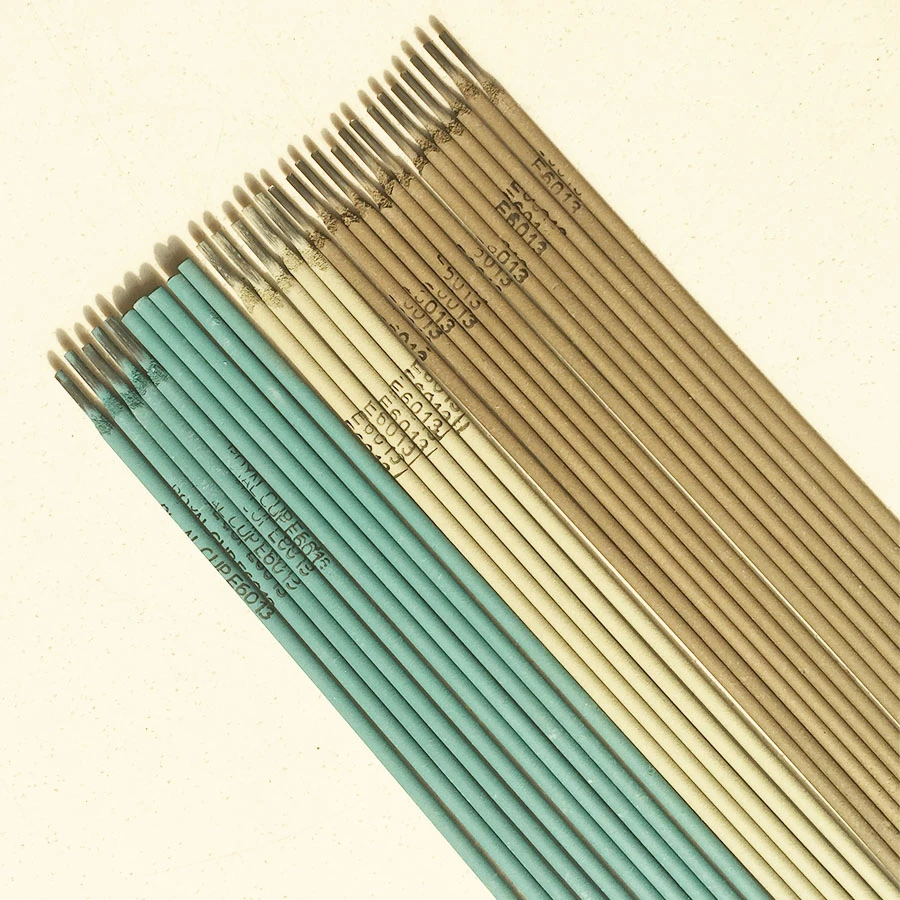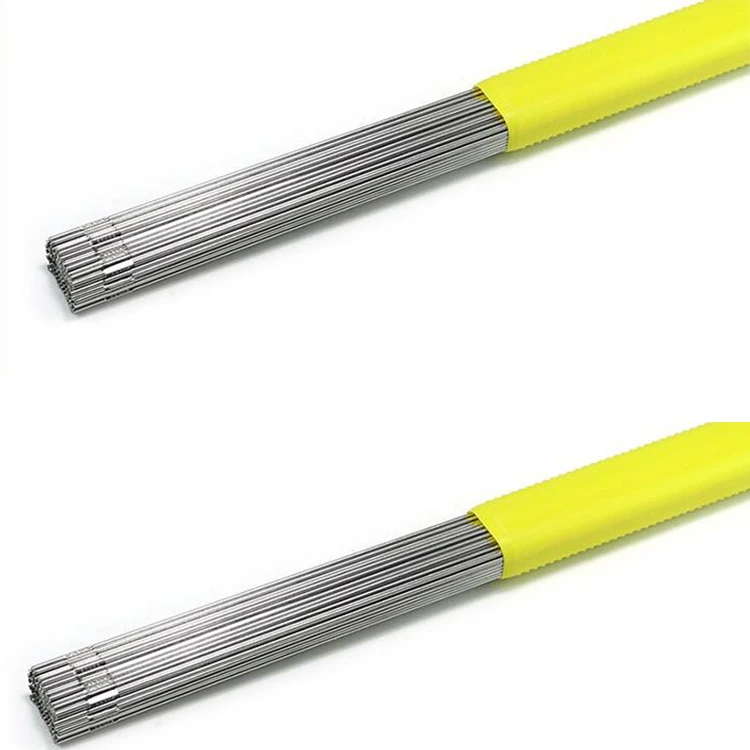E7018 WELDING RODS
The E7018 welding electrode is a versatile and widely used electrode in the welding industry, known for its numerous advantages that make it a preferred choice for a variety of welding applications. One of the primary benefits of the E7018 electrode is its low hydrogen content, which significantly reduces the risk of hydrogen-induced cracking, a common issue in welding. This feature makes E7018 ideal for welding high-strength steel and thick sections where the prevention of cracking is critical. Additionally, the E7018 electrode provides a stable arc, which leads to smooth and consistent welds with minimal spatter. This stability ensures high-quality welds with excellent bead appearance and minimal post-weld cleaning, which can save time and reduce labor costs. The electrode also has a fast-freezing slag system, which allows for out-of-position welding, including vertical and overhead positions. This flexibility is particularly valuable in construction, shipbuilding, and pipeline industries, where welding often occurs in challenging environments. Furthermore, the E7018 electrode offers excellent mechanical properties, such as high tensile strength and good impact toughness, making it suitable for structural and critical applications that require durability and reliability under stress. The easy-to-remove slag produced by E7018 electrodes also contributes to its popularity, as it simplifies the cleanup process and enhances weld inspection efficiency. Overall, the combination of low hydrogen content, stable arc performance, versatile positioning capabilities, and excellent mechanical properties makes the E7018 welding electrode a reliable and efficient choice for professional welders looking to achieve high-quality results across a wide range of materials and conditions.
-
 E7018 is a multi-purpose electrode with excellent handling properties. 7018 performs especially well when welding mild steel or low alloy steel, such as bridges, construction,
E7018 is a multi-purpose electrode with excellent handling properties. 7018 performs especially well when welding mild steel or low alloy steel, such as bridges, construction, -
 E7018 is a multi-purpose electrode with excellent handling properties.
E7018 is a multi-purpose electrode with excellent handling properties. -
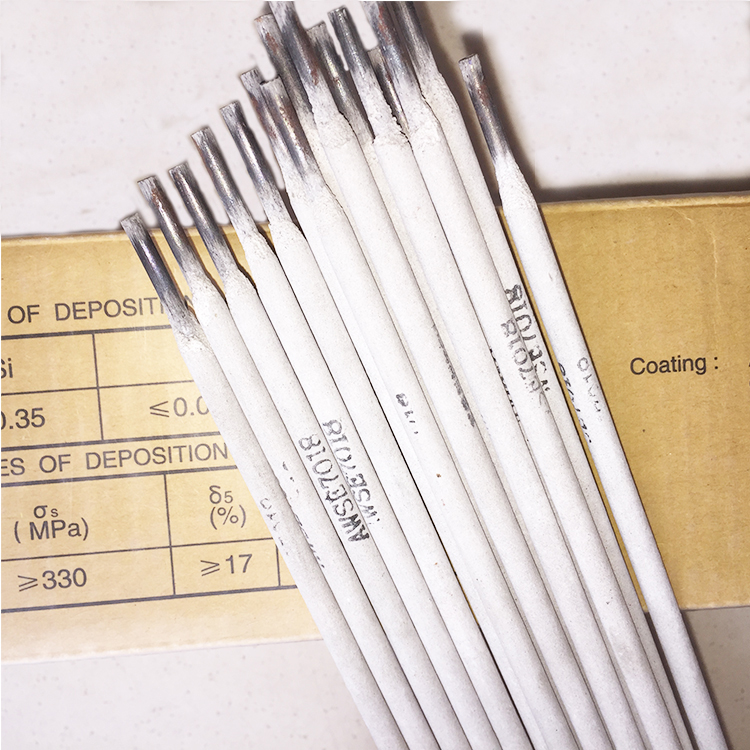 Iron powder type basic electrode GB/T 5117 E5018 AWS A5.1 E7018 ISO 2560-B-E4918 A
Iron powder type basic electrode GB/T 5117 E5018 AWS A5.1 E7018 ISO 2560-B-E4918 A -
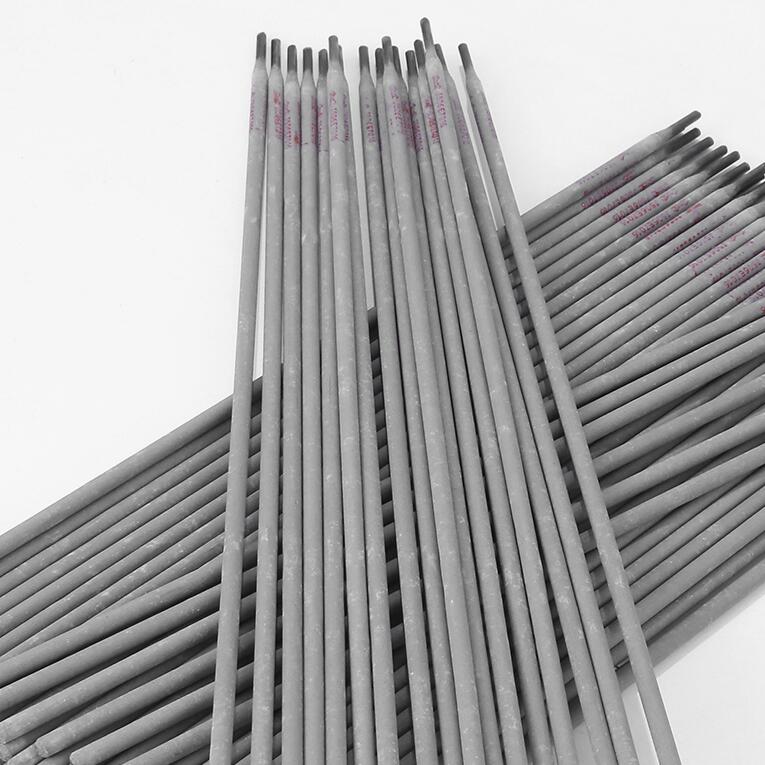 Iron powder type basic electrode GB/T 5117 E5018 AWS A5.1 E7018 ISO 2560-B-E4918 A
Iron powder type basic electrode GB/T 5117 E5018 AWS A5.1 E7018 ISO 2560-B-E4918 A -
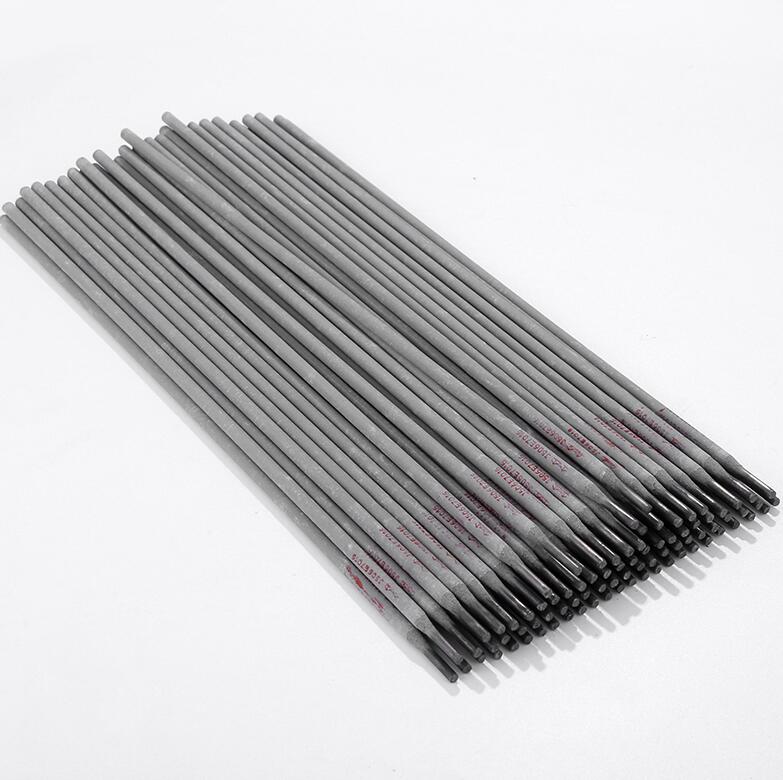 AWS E7018 is basic coated iron powder low potassium hydrogen type electrode.
AWS E7018 is basic coated iron powder low potassium hydrogen type electrode.
E7018 Electrode Meaning
The designation "E7018" is a part of the American Welding Society (AWS) classification system. Here, the letter 'E' stands for electrode, while '70' indicates the minimum tensile strength of the weld metal in thousands of pounds per square inch (psi). This means that the E7018 welding electrode is capable of producing welds that can withstand a minimum tensile strength of 70,000 psi. The '1' denotes that the electrode can be used in various positions—flat, horizontal, vertical, and overhead—making it versatile for multiple welding applications. Finally, '8' signifies that the electrode has a low hydrogen content, which is crucial for minimizing the risk of cracking in the weld joint.
The E7018 welding electrode is renowned for its ability to produce high-quality welds, particularly in carbon and low-alloy steels. It is often favored for its smooth arc, excellent penetration, and ability to provide a clean weld bead. These characteristics make the E7018 welding electrode an ideal choice for critical structural applications, such as in the construction of bridges, buildings, and heavy machinery.
Moreover, its low hydrogen levels significantly reduce the chances of hydrogen-induced cracking in welds, which is particularly important for high-strength steel applications. This quality has solidified the E7018 welding electrode’s reputation among professional welders and manufacturers alike.
7018 Welding Rod Used For
The E7018 welding electrode is characterized by its low hydrogen content, which minimizes the risk of hydrogen-induced cracking in welds, making it particularly suitable for high-strength steel applications. One of the primary areas where the E7018 is utilized is in structural welding. This includes large-scale constructions such as bridges, buildings, and pressure vessels. The electrode's ability to produce strong, ductile welds allows structural engineers to rely on the integrity and safety of their constructions.
Another significant application of the E7018 welding electrode is in the fabrication of machinery and equipment. The electrode's versatility is evident in its performance on a range of metals, including carbon steels and low-alloy steels. This makes E7018 an ideal choice in manufacturing industries where machinery requires reliable and long-lasting welds.
Moreover, the E7018 welding rod is widely used in heavy-duty applications, such as shipbuilding and pipeline welding. The electrode's excellent arc stability grants welders the precision needed for intricate welds in these demanding environments, ensuring that the final products meet rigorous standards for strength and durability.
What Is the Difference Between 6013 and 7018
E6013 Welding Electrode
The E6013 welding electrode is often favored for its versatility and ease of use. This type of electrode is ideal for light to medium-duty welding tasks, especially on thin materials. It operates with a stable arc and produces a smooth bead, making it a favorite among beginners and skilled welders alike. The E6013 is known for its ability to handle various weld positions and is also suitable for alternating current (AC) welding, which adds to its flexibility in different environments.
E7018 Welding Electrode
In contrast, the E7018 welding electrode is considered a low-hydrogen electrode. It is specifically designed for use in critical applications, such as structural steel and pressure vessels, due to its excellent strength and ductility properties. The E7018 requires a higher welding skill level because it produces a tougher and more durable weld. Additionally, it can only be used with direct current (DC) power sources, which may limit its application in some scenarios. The electrode needs to be kept dry to prevent moisture absorption, which can lead to hydrogen cracking in the weld.
Electrode 6013 Vs 7018
In summary, the main differences between the E6013 and E7018 welding electrodes lie in their composition, usability, and suitability for different types of projects. While E6013 is more versatile and user-friendly for general purposes, E7018 excels in high-strength applications where structural integrity is paramount. Understanding these differences will help you select the appropriate bulk welding rod for your next welding project. By choosing wisely, you can ensure the strength and durability of your welds, ultimately achieving superior results in your work.
7018 Welding Rod Specifications
The E7018 welding rod, also known as a "low-hydrogen" electrode, is widely used in shielded metal arc welding (SMAW) for its versatile performance and high-quality welds. Here are the key specifications for the E7018 welding rod:
1. Coating Type: Low-hydrogen potassium iron powder
This coating reduces the risk of hydrogen-induced cracking, which is especially important when welding high-strength or thicker materials.
2. Welding Positions: All positions (flat, horizontal, vertical, and overhead)
E7018 is versatile and can be used in various positions, making it ideal for a wide range of applications, including structural steelwork, shipbuilding, and pressure vessels.
3. Current Type: AC or DC (Direct Current)
E7018 can be used with both alternating current (AC) and direct current electrode positive (DCEP), offering flexibility depending on the welding machine and the requirements of the job.
4. Deposited Metal Properties:
Tensile Strength: Minimum of 70,000 psi.
Yield Strength: Typically around 58,000 psi.
Elongation: Typically around 22%.
5. Diameter Range: Available in various diameters, including 1/16", 5/64", 3/32", 1/8", 5/32", 3/16", and 1/4" to accommodate different thicknesses of base metal and welding conditions.
6. Operating Temperature: Preheat and interpass temperature typically recommended depending on the base metal being welded, often between 50°F to 300°F (10°C to 150°C).
7. Storage Requirements:
E7018 electrodes are sensitive to moisture and must be stored in a dry environment.
It is often recommended to store them in a rod oven at around 250°F to 300°F (120°C to 150°C) to prevent moisture absorption, which could lead to hydrogen cracking.
8. Packaging: Typically available in 10 lb (4.5 kg) to 50 lb (22.7 kg) boxes or cans, often vacuum-sealed or with moisture-resistant packaging to maintain dryness.



